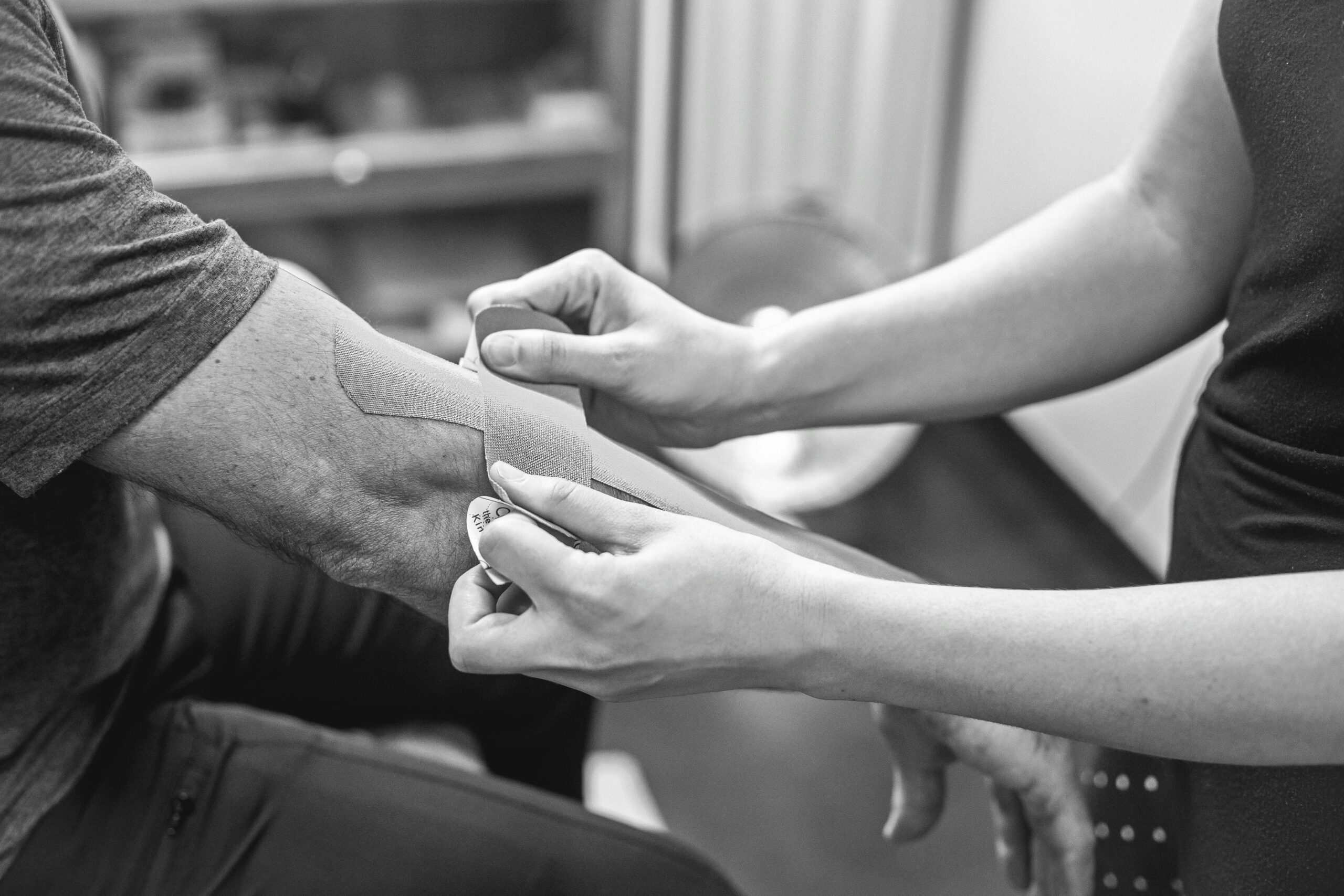The Hidden Impact of Elbow Injuries: Why Your Wrist and Hand Might Hurt Too

November 10, 2025
When pain or weakness shows up in your hand or wrist, your first thought probably isn’t your elbow. But many people are surprised to discover that conditions affecting the elbow can have a ripple effect throughout the entire arm—right down to the fingertips.
At Hands for Living, we often see patients who come in for wrist or finger pain, only to find that the source of the problem is higher up. The elbow plays a critical role in upper limb health, and when something’s not right there, the rest of the arm often compensates—and suffers.
Why the Elbow Matters for Wrist and Hand Function
The elbow isn’t just a hinge—it’s a hub for muscles, tendons, and nerves that connect the upper and lower arm. Several key muscles that control your wrist and fingers actually originate at the elbow. When those muscles or tendons become irritated, overloaded, or inflamed, they can affect how your wrist moves, how strong your grip feels, or even how your fingers respond.
You may notice:
- Aching in your forearm after gripping
- Pain with lifting or twisting (especially with the palm down)
- Tingling in your ring or little finger
- Reduced endurance during tasks like writing, chopping, or lifting
What feels like a hand issue might actually be rooted in the elbow.
Common Elbow Conditions That Affect the Hand
Tennis Elbow (Lateral Epicondylitis)
This condition involves overuse of the tendons on the outside of the elbow—especially those that help extend your wrist and fingers. Pain may begin at the elbow but can travel down into the wrist, making everyday movements like pouring from a kettle or lifting a bag painful.
Golfer’s Elbow (Medial Epicondylitis)
A similar overuse injury on the inside of the elbow, this condition affects the tendons that help with gripping and wrist flexion. It may cause tenderness in the forearm and reduced strength when holding objects.
Cubital Tunnel Syndrome
This is a nerve compression condition involving the ulnar nerve, which passes through the inside of the elbow. It can lead to numbness, tingling, or weakness in the hand—particularly in the ring and little fingers.
These issues often develop gradually, especially with repetitive movement or sustained positions (such as long computer use, heavy lifting, or manual work).
Why You Might Be Feeling the Symptoms Elsewhere
Pain that appears in the hand or wrist but originates from the elbow is known as referred pain. In many cases, the body’s complex network of nerves and tendons means that a problem in one joint affects another down the line.
Here’s how it can show up:
- Wrist pain when lifting—caused by irritated elbow tendons
- Hand weakness—due to reduced nerve input from the elbow
- Finger stiffness or tingling—resulting from nerve compression near the elbow
- Tired forearms—because of overloaded elbow-to-hand muscle groups
The elbow and hand are part of the same system, so when one is struggling, the other picks up the slack—often leading to secondary symptoms.
How Hand Therapy Helps Both Ends of the Arm
At Hands for Living, we look at the whole upper limb, not just the area where symptoms appear. If you’re experiencing wrist or hand discomfort, part of your therapy plan may involve treating the elbow as well.
Our approach may include:
- Manual therapy to release tight structures and restore elbow motion
- Targeted exercises to strengthen forearm muscles and balance load
- Nerve gliding techniques to reduce symptoms of compression
- Ergonomic advice to prevent re-irritation through posture or repetitive stress
- Custom splinting if rest and support are needed temporarily during healing
We tailor every plan to match your lifestyle and recovery goals—whether that’s returning to a sport, lifting your toddler, or working comfortably at a desk.
It’s All Connected—And Treatable
If your hand or wrist symptoms just won’t settle down, it’s worth looking upstream. Elbow injuries may not always cause pain right at the joint—but their effects can be felt throughout the arm.
With the right therapy and a connected approach to treatment, you can relieve strain, restore movement, and get back to what you need your hands to do—without pain.